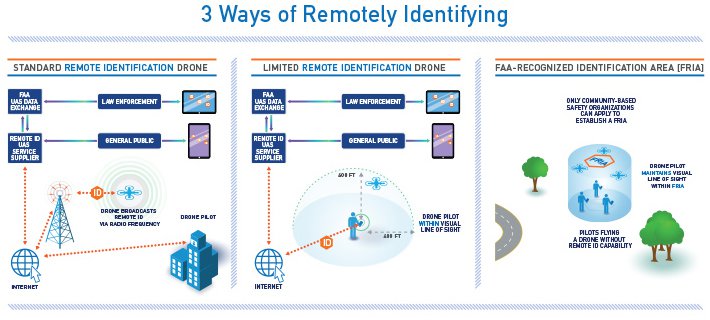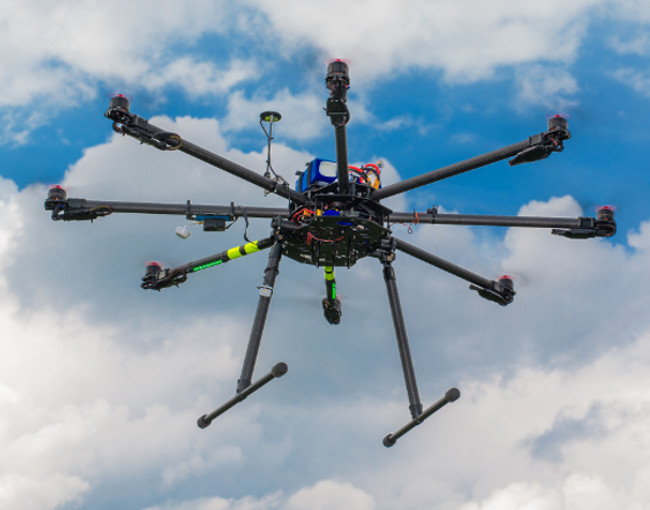On December 26, 2019, the Federal Aviation Administration (FAA) announced a long-awaited notice of proposed rulemaking (NPRM) on remote identification (Remote ID) for unmanned aircraft systems (UAS or drones). The proposed rule would address safety, national security, and law enforcement concerns regarding further integration of UAS into the National Airspace System.
The rule would require UAS to implement Remote ID, which is the ability of an unmanned aircraft in flight to provide certain identification information (e.g., serial number/session identification number) and location information (e.g., altitude), to third parties on the ground or to other airspace users. As the FAA states, “[w]hile remote identification alone will not enable routine expanded operations such as operations over people or beyond visual line of sight, it is a critical element for building unmanned traffic management capabilities.”
With limited exceptions (discussed below), all drones weighing more than 0.55 pounds, flown for commercial or recreational purposes, would be required to comply with Remote ID. The proposed rules would create three main categories of compliant flight:
- “Standard” Remote ID: The drone must broadcast information directly over a radio frequency and transmit over the internet to an FAA monitoring service); and
- “Limited” Remote ID: The drone must transmit over the internet to an FAA monitoring service, but would not have a broadcast requirement, and must operate within 400 feet of the controller.
- FRIA: Operators flying within their visual line of sight and within an FAA-Recognized Identification Area (FRIA) would be exempted from these rules in a third category of permitted operation. The FRIAs are flying sites established within the programming of a community-based organization and recognized by the FAA. Drones that are not otherwise compliant with the first two Remote ID standards would be able to fly at these limited sites.
As illustrated by the FAA earlier this month, the three categories of Remote ID compliant flight can be depicted as follows:

Source: FAA's Remote ID for Industry
The proposed rule states that private companies, under contract with the FAA, would set up tracking systems for drones, similar to air-traffic control systems for manned aircraft.
The proposed rule envisions that within three years of the effective date of the final rule, all UAS operating in United States airspace will be complaint with the Remote ID requirements. No UAS could be produced for operation in the United States after two years of the final rule and no UAS could be operated after three years of the final rule except in accordance with the requirements of the proposed rule. The rules for drone manufactures are “performance-based” production and design standards, meaning that producers have some flexibility in deciding how their products would meet the FAA’s proposed requirements.
Members of the public may submit comments on the proposed rule during a 60-day comment period beginning December 31, 2019 (the date the proposed rule will formally be published). See the FAA’s UAS Remote ID website for more information on how to comment.
Thompson Coburn LLP’s UAS Group is continuing its review of the over 300-page advanced publication of the NPRM and will provide additional information and insights in articles and on a future episode of the Three Lawyers and a Drone podcast.
Thompson Coburn's UAS attorneys are available to provide guidance and assistance in several areas, including understanding and monitoring the landscape of UAS regulation; assisting users and manufacturers in drafting responses to FAA Notices of Interpretation and/or Notices of Proposed Rulemaking; providing counsel on the FAA authorization and exemption process; drafting and filing FAA exemption requests seeking relief from current FAA certification requirements; preparing Standard Operating Procedures; drafting, reviewing, and/or revising Flight Operations, Safety and Maintenance Manuals; and drafting or reviewing UAS service contracts.
Sean McGowan is the co-chair of Thompson Coburn’s UAS (Drone) Practice Group and a member of the Aviation Practice Group. Tyler Black is an associate in the UAS Practice Group.

